

Exploring our past to sort out myth from reality
Share this Page on
Facebook or Twitter

These are the voyages of the TimeShip Anachron.
Our Mission: To boldly explore the past, dispelling
mythinformation and mythconceptions
of American History along the way.
 Visit us on Facebook
Visit us on Facebook


These are the voyages of the TimeShip Anachron.
Our Mission: To boldly explore the past, dispelling
mythinformation and mythconceptions
of American History along the way.

Exploring our past to sort out myth from reality
Share this Page on
Facebook or Twitter
 Visit us on Facebook
Visit us on Facebook
Meet MythAmerica LITE
Flash Gordon Goes Grocery Shopping:
The Amazing Keedoozle Story
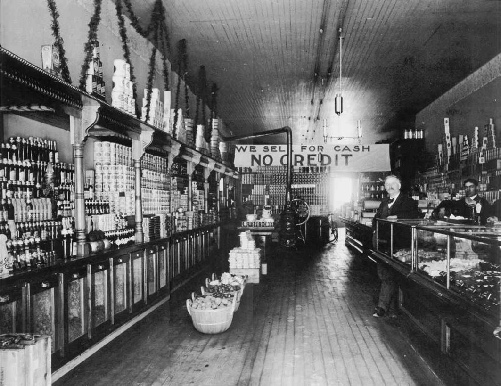
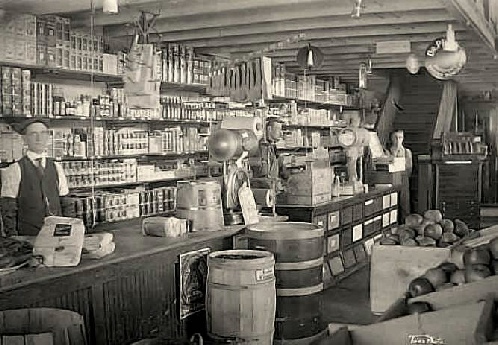
Around the turn of the last century, going grocery shopping was pretty much the same as it had been for a century or more in many American cities and towns. On shopping day, if you wanted meat, you went to a meat market. If you wanted baked items like bread, you’d go to a bakery. And for all your “packaged” items, like cereal, flour, canned peas, or coffee, you’d go to the grocer. The photos above are of typical grocery stores of around 1900.
When you entered the grocery store, you would head for the counter and hand your grocery list to one of the employees. He (or she) would then search around the walls of shelves behind the counters and gather up the items you requested. Back at the cash register, the clerk would add up the prices of all the items, you’d pay your bill, the clerk would box or bag up your purchase, and you’d head home.
This all changed drastically in 1916 as a result of the wild-
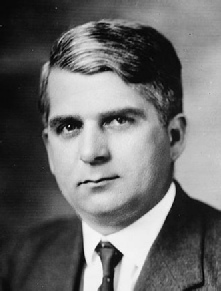
In fact, he even patented the idea. And then built the very first … Piggly Wiggly store, in Memphis, Tennessee.
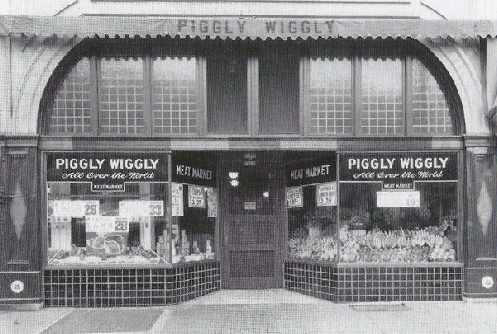
Yes, Piggly Wiggly has been around that long, and was the pioneer in all sorts of “modern” features of grocery shopping. As noted on the Piggly website, Piggly Wiggly was the FIRST to…
provide checkout stands
price mark every item in the store
give shoppers more for their food dollar through high volume/low profit margin retailing
feature a full line of nationally advertised brands
use refrigerated cases to keep produce fresher longer
put employees in uniforms for cleaner, more sanitary food handling
design and use patented fixtures and equipment throughout the store
franchise independent grocers to operate under the self-
In the original store, you entered through a turn-

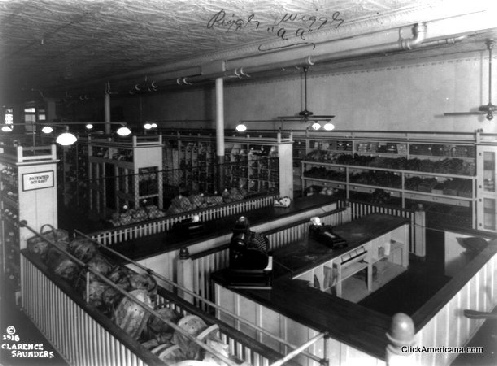
You then walked through a maze of aisles, picking out the items on your shopping list (and maybe some on-
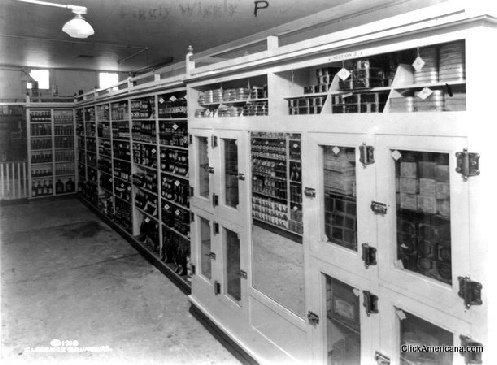
You ended up in the check-
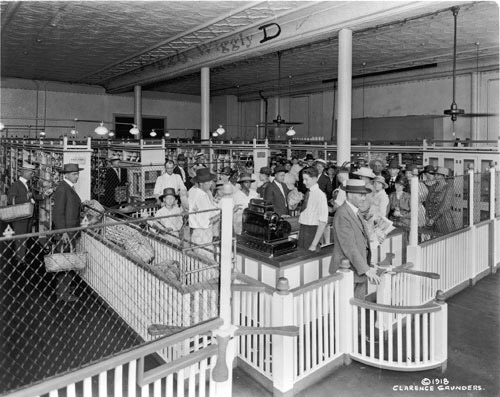
Lots of nay-
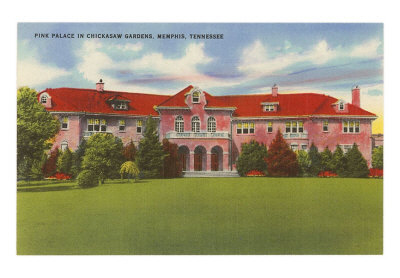
But in 1923, he lost in a frantic stock battle on Wall Street, and was forced into bankruptcy.
Because of this Piggly Wiggly financial reversal, Saunders was forced to sell his partly completed Memphis mansion to the city. The mansion, nicknamed the Pink Palace eventually became the city's historical and natural history museum. Today, the Pink Palace includes a walk-
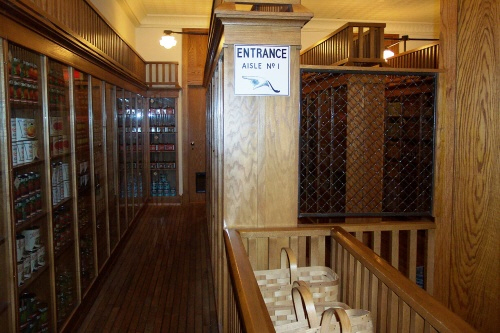
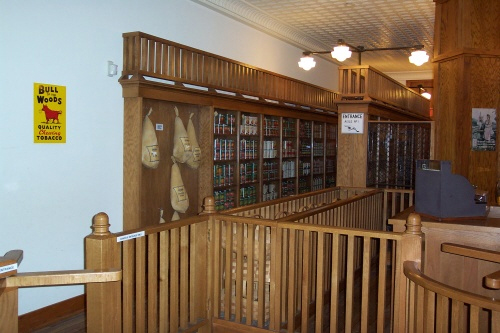
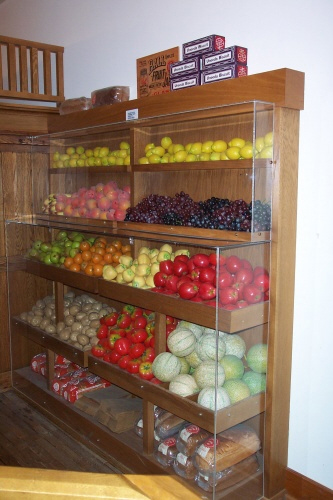
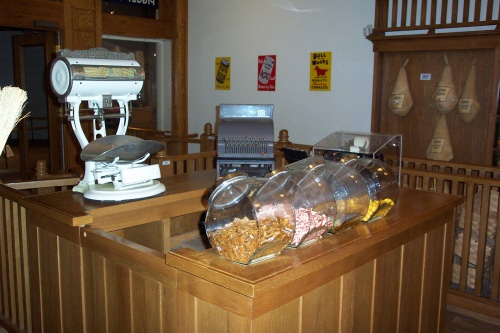
The Piggly Wiggly corporation was divided up in 1923 into several units, some of which were sold to a number of regional grocery chains such as Kroger. A smaller central Piggly Wiggly corporation, made up of many independently-
1920
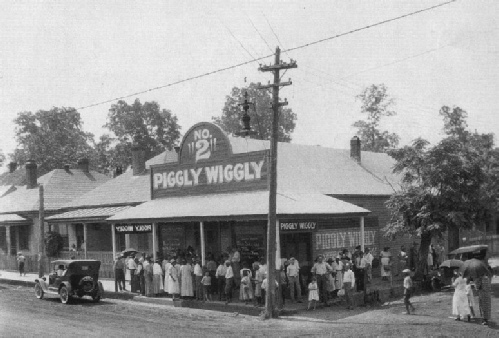
1924: Piggly Wiggly trucks at the Christo Cola bottling center.
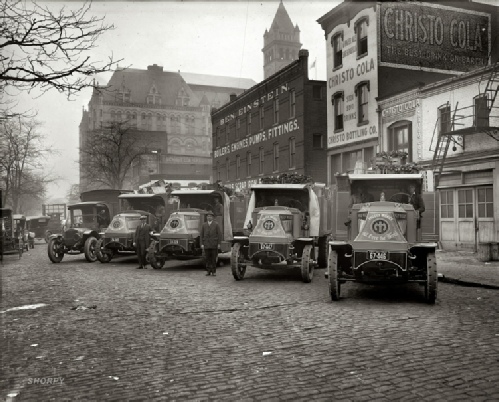
Sometime between 1929 and 1935
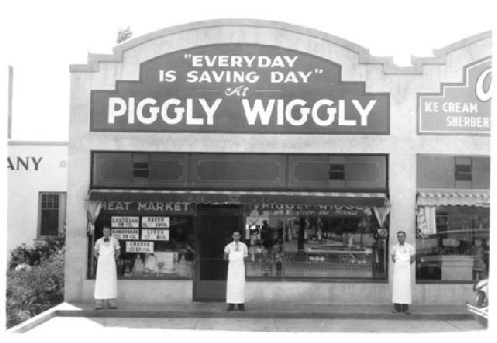
1950
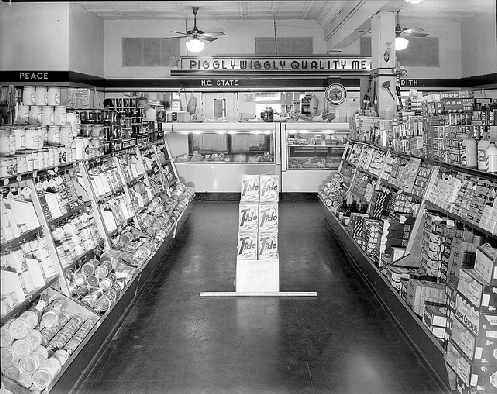
1951
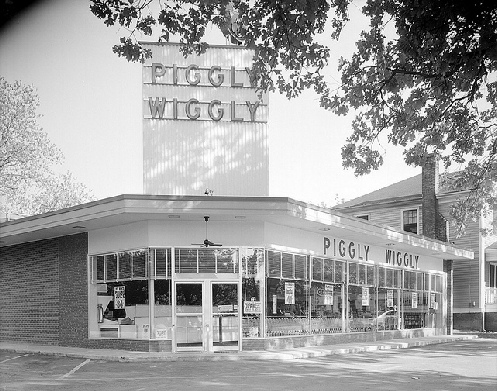
1971
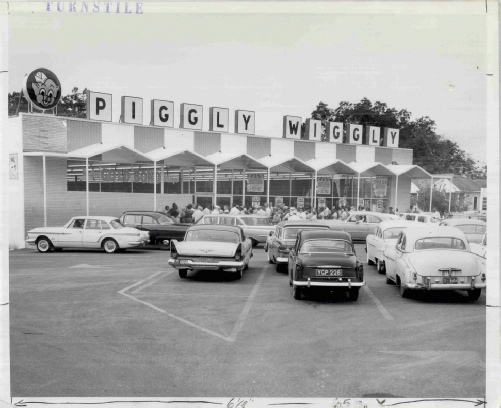
And here is the thoroughly modern Piggly of today.
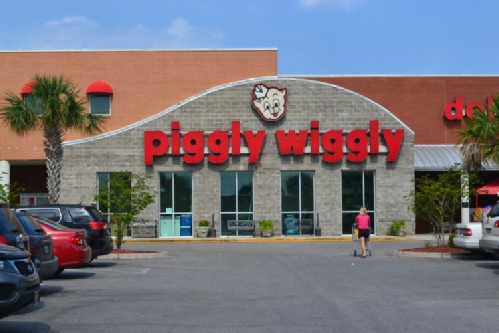

There are about 600 Piggly Wiggly stores across the country now, most of them in small towns and small to medium sized cities. Most are in the South…there were never any in Michigan, where I lived up until 2007. I’d never heard of the stores until seeing one while on vacation in Florida in the 1980s. But there are two within five miles of where I live now in a suburb of Savannah, Georgia. A Piggly Wiggly store in nearby Savannah even advertises on big signs within the store that it is “employee owned and run.”
But back to Clarence. Clarence was never a quitter. So within a very short time, he started another profitable grocery store chain. Irked that the very name he had created, Piggly Wiggly, had been stolen from him, he ironically named his new chain "Clarence Saunders, Sole Owner of My Name Stores.” (Most folks referred to the stores as “Sole Owner” stores.)
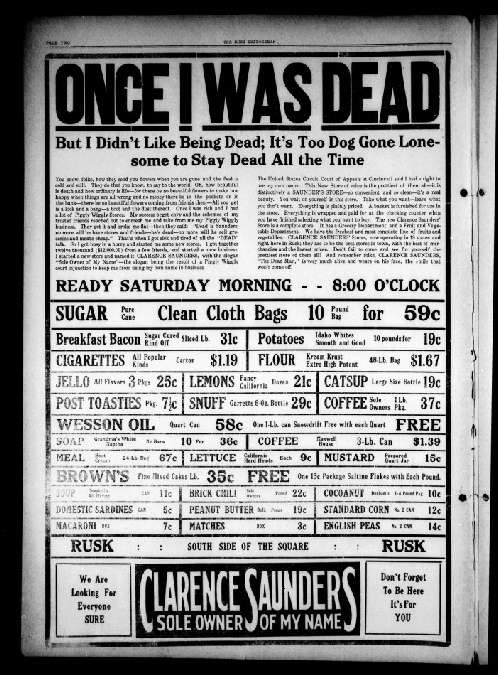
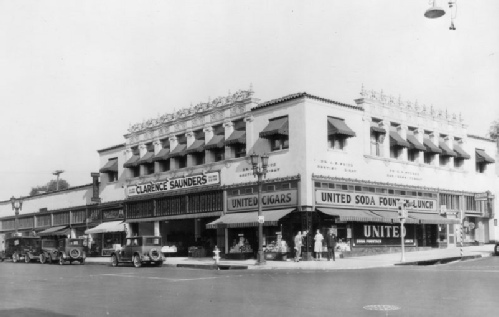
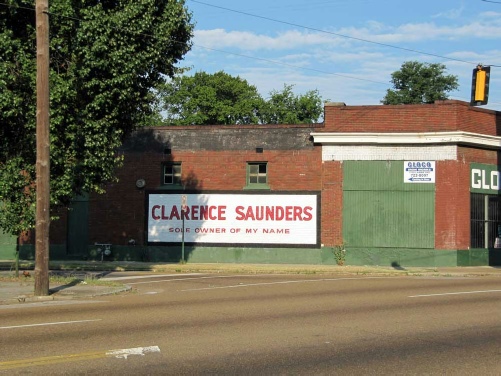
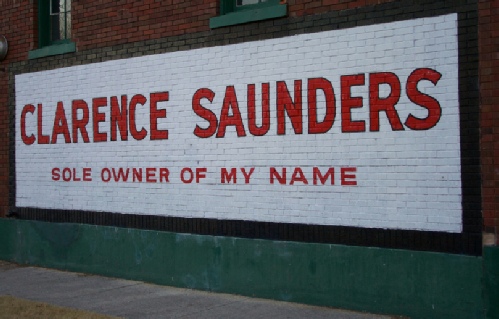
Amazingly, Clarence built this chain up to 675 stores with annual sales of $60 million. But then the Great Depression came, and the new chain didn’t survive the downward spiral of the economy. It went into bankruptcy in 1930.
Still Clarence never gave up his dreams…they only got more grandiose!
And that brings us to Flash Gordon.
Flash was introduced in 1934 in a wildly popular sci-
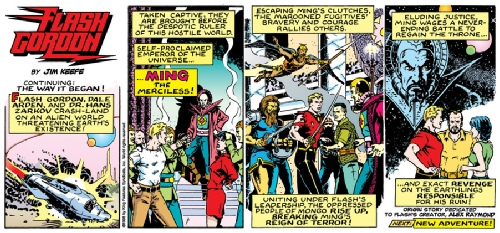
By 1940, Flash’s adventures had been transferred to the Big Screen in numerous serial adventures. Here he is (played by Buster Crabbe) in the 1940 serial film Flash Gordon Conquers the Universe.
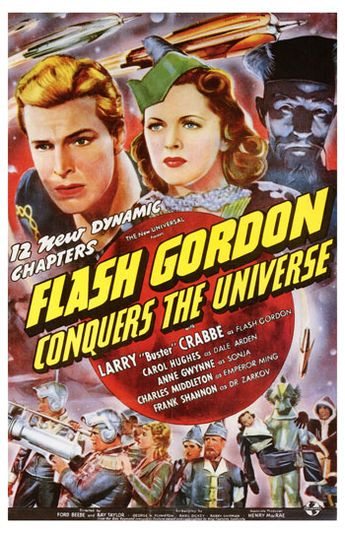
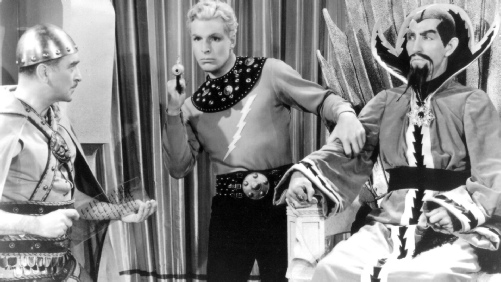
It’s never all that clear “when” Flash is supposed to be living, but there’s no question that it is some cool futuristic time. Yet Earth in 1940 wasn’t all that futuristic in most places. I would suggest to you that if Flash had time-
No, Flash would have been right at home in Clarence’s next entry into his race to The Future of Grocery Shopping… the KEEDOOZLE store.

When I first heard of these stores, I honestly thought it was a spoof on something. Surely no serious businessman would have named a grocery store Keedoozle. But that was before I heard of the man who named his earlier stores "Clarence Saunders, Sole Owner of My Name Stores.” Such a man was capable of coming up with any weird name he wanted to use! So Keedoozle it was.
And futuristic it was.
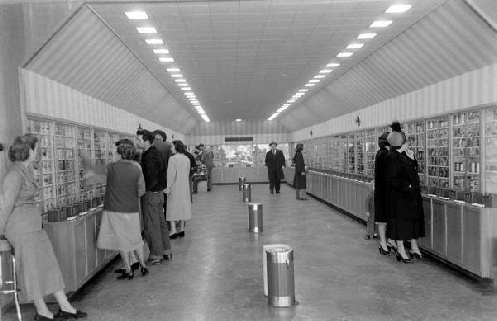
Saunder’s first Keedoozle store opened in 1937. Technical problems closed it within a few months. It opened again in 1939 with some improvements...but still failed within a short time, again because of technical problems. He might have continued trying to make gradual improvements and open again, but World War 2 intervened. But it was obvious that his mind never quit churning during the war years. By 1948, he was convinced he’d beaten those technological problems, and he opened a brand new incarnation of the Keedoozle.
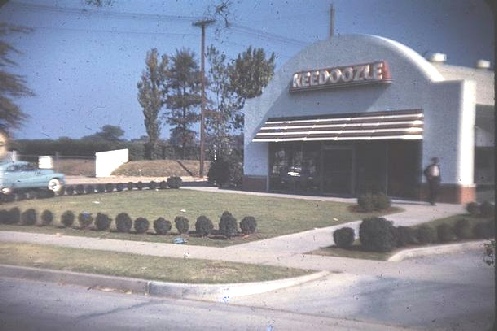
And with the grand opening, he peppered the media with grandiose descriptions of his plans and his expectations. In a LIFE magazine interview published in the January 3, 1949 edition, he noted that he planned to sell the equipment necessary to set up a Keedoozle store for $50,000 to franchisees. He would oversee their operations, and charge them ½ to 1% of their gross for the use of the Keedoozle name. And… “In five years there will be a thousand Keedoozles throughout the US, selling $5 BILLION worth of goods.”
So…just what WAS a Keedoozle store? The Piggly Wiggly had been a “self-
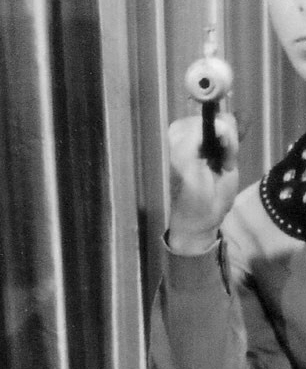
Here’s what one of those looked like up close.
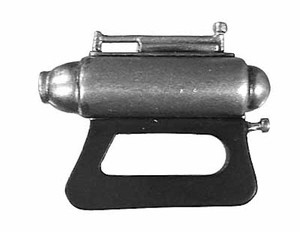
But he’d put away his laser to go shopping…for when he gets to the store a helpful clerk would give him a vaguely similar “weapon,” often referred to as a “key.”
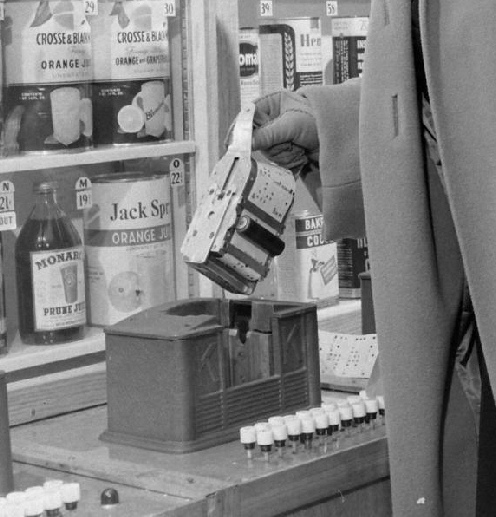
What would he do with that key? Here’s how the LIFE magazine article described the procedure:
Keedoozle is almost completely automatic. On entering the customer takes a “key”—an aluminum mechanism that holds a roll of paper tape—to display cases containing samples of all goods sold.
A key like the one this lady is holding.
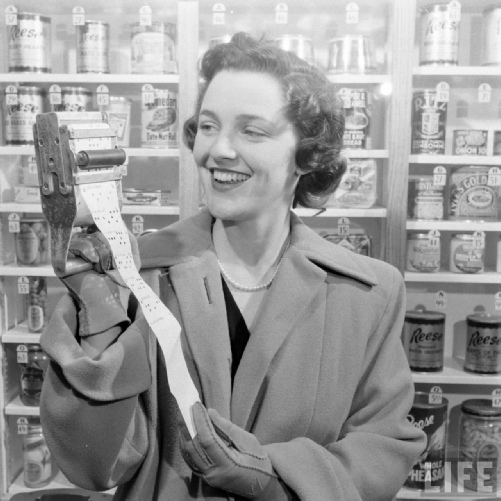
Or the one held here by Clarence himself.
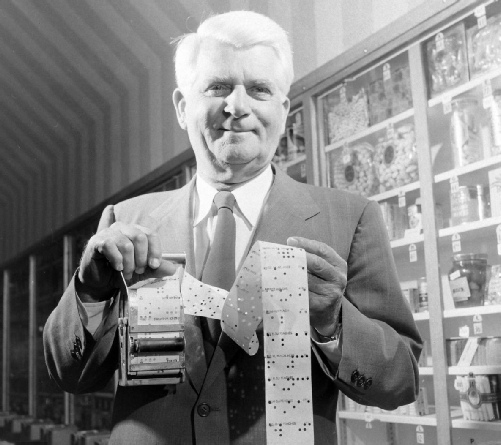
For each purchase she puts the key in the slot, presses a button. This records her purchase on the tape by punching a pattern of holes.

If you could see these pictures closely enough, you’d see that each food item is labeled much like goodies are often labeled in candy dispensing machines these days…with a letter and a number, like H3 or B6. In front of each of the key slots are a two rows of buttons, and I assume one has letters, the other numbers, so the shopper can “key in” the correct combination for the bottle of prune juice or box of Corn Flakes she wants.
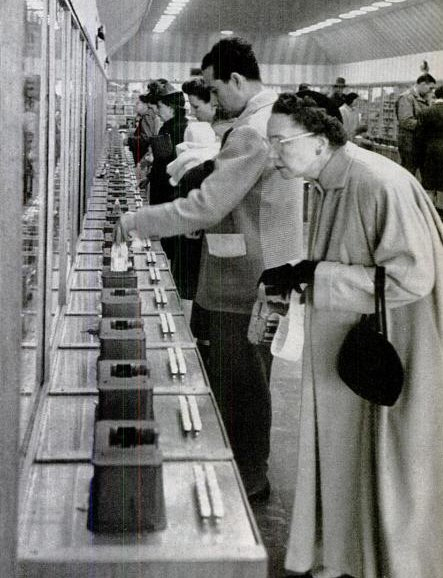
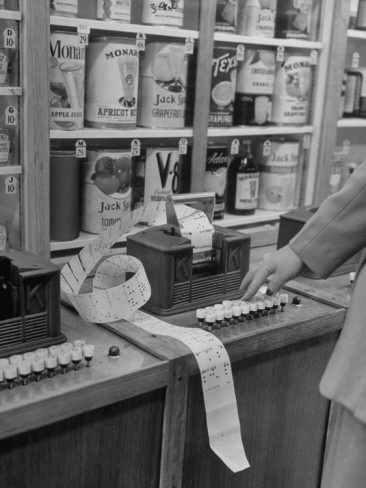
Information from each key-
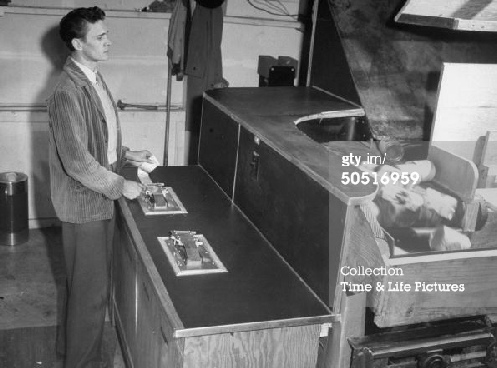
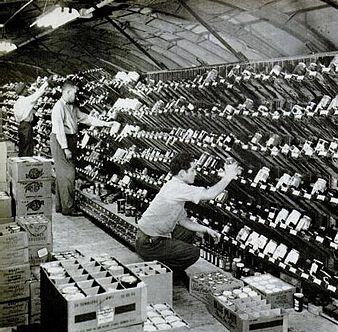
When her complete order has been punched on the tape, she takes the key to the cashier at the front of the store.
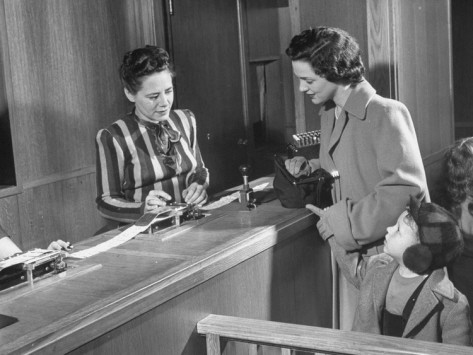
The cashier has a gadget that "translates" the punched holes and reads how much is owed.
In a few seconds Keedoozle’s mechanism delivers the order to the customer, waiting in the pleasant lounge near the door.
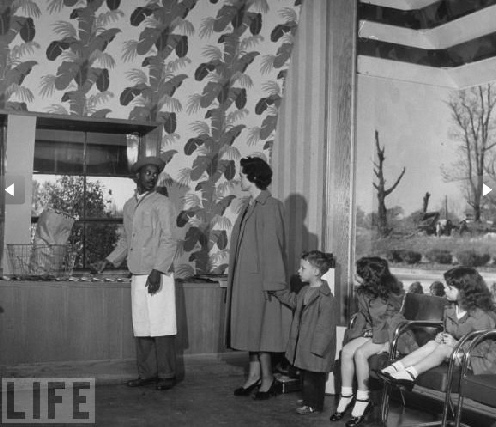
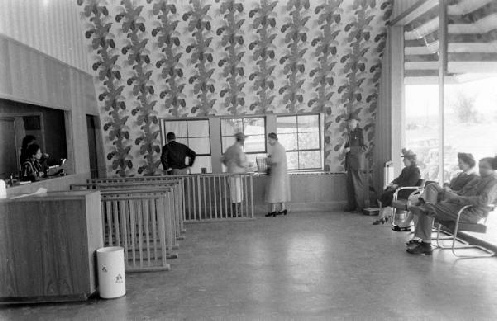
But for all of Clarence’s chutzpah, it didn’t pan out that way. As Time Magazine put it in an article in the August 29, 1949 issue:
Last month, Saunders’ one and only Keedoozle in Memphis went kerplunk. In eleven months Saunders had lost $170,000. Said he: “Keedoozle was too much for the average mind to comprehend.” Besides attracting too few customers, it cost too much to run the calculators and conveyor belts.
The bottom line seems to have been also that the primitive computing abilities of the equipment used in the stores…much of it “invented” by Clarence himself…just wasn’t up to the pressure of dealing with the volume of business necessary to make a profit. It kept having glitches and mixing up orders. And the mechanical aspects of the process, also invented by Clarence, sometimes failed miserably too: The LIFE magazine article noted that this included “the time a reporter doing a story on the store was almost killed by an avalanche of canned turnips in the back room area.”
Yes, I think Flash would have loved the futuristic Keedoozle store. But maybe not after his order for his space trip got mixed up with Mrs. Smith’s groceries for her Ladies’ Tea.
P.S.
The descriptions of the history of Piggly Wiggly and Keedoozle Stores at various places on the Net, including on Wikipedia, often include apocryphal stories about the origin of the names. Some folks insist Clarence came up with the name for the Piggly Wiggly stores after he saw some baby pigs by the side of the road trying to get under a fence to go nurse on Momma Pig. (“Self Service,” I guess…) But in the LIFE magazine article Clarence insisted it was just a nonsense phrase that popped into his head out of nowhere. The same with the Keedoozle name. Some accounts insist it was a slang version of “Key Does All,” referring to the key gadget used. But in direct interviews with Clarence, again he insisted that it was another nonsense word he grabbed out of thin air.
And what happened to Clarence after the Keedoozle Kerflop? He never gave up. At the time of his death in 1953, he was developing plans for another automated store system he’d dubbed the “Foodelectric.” Those plans died with him.